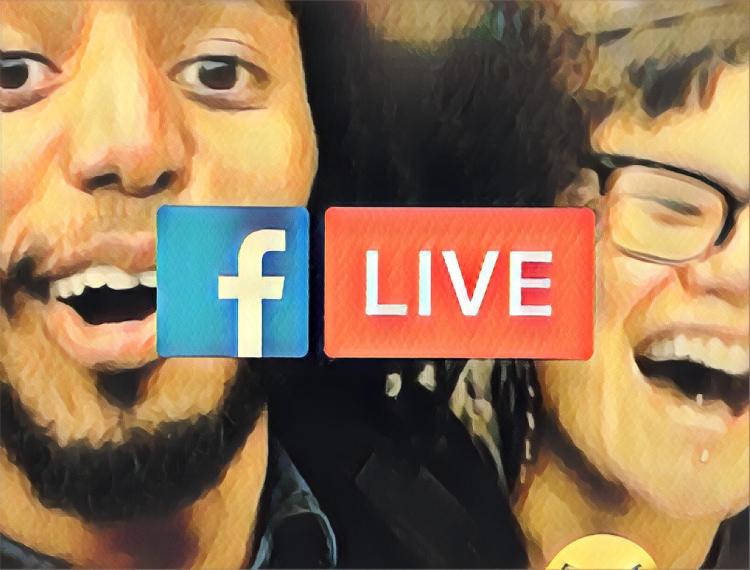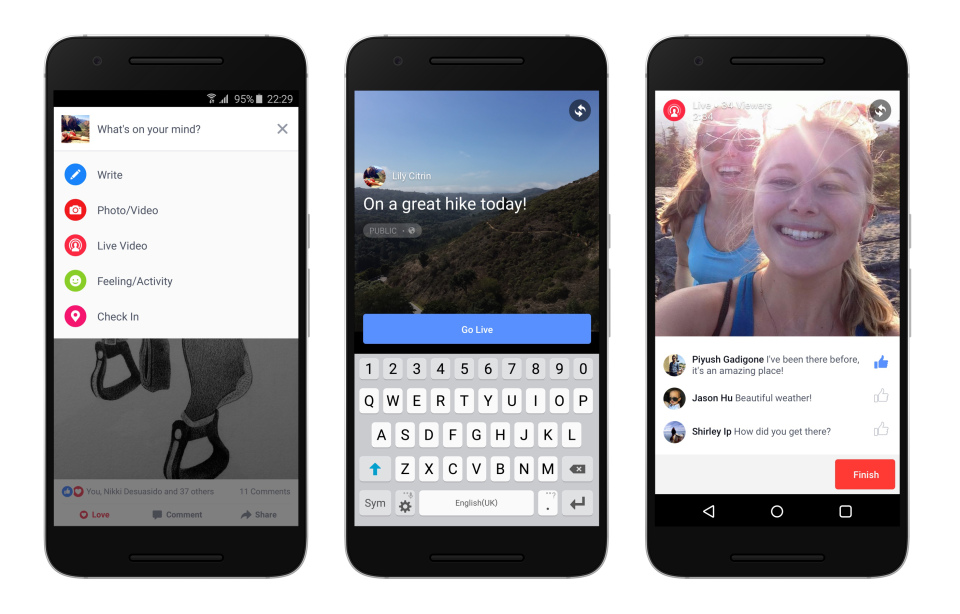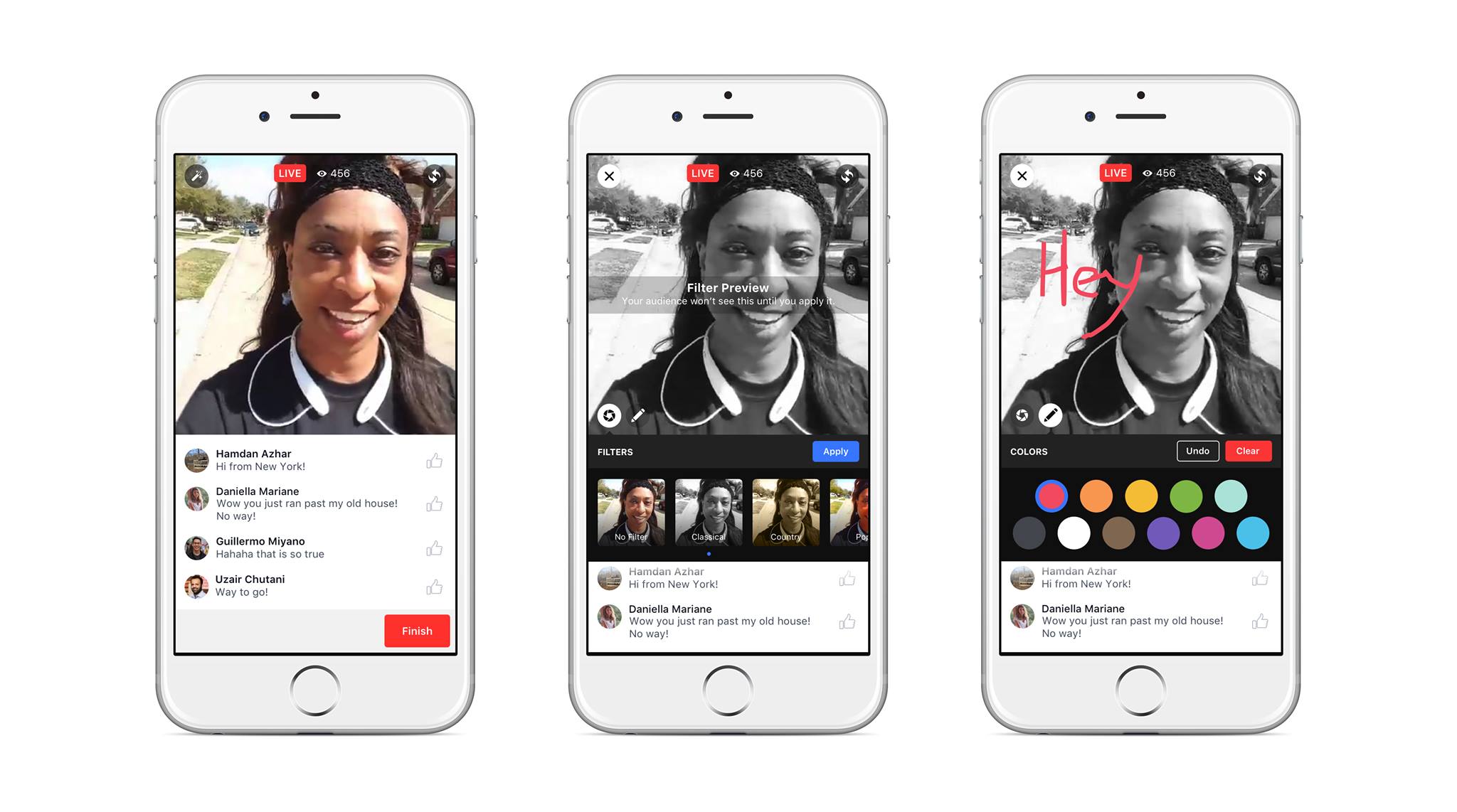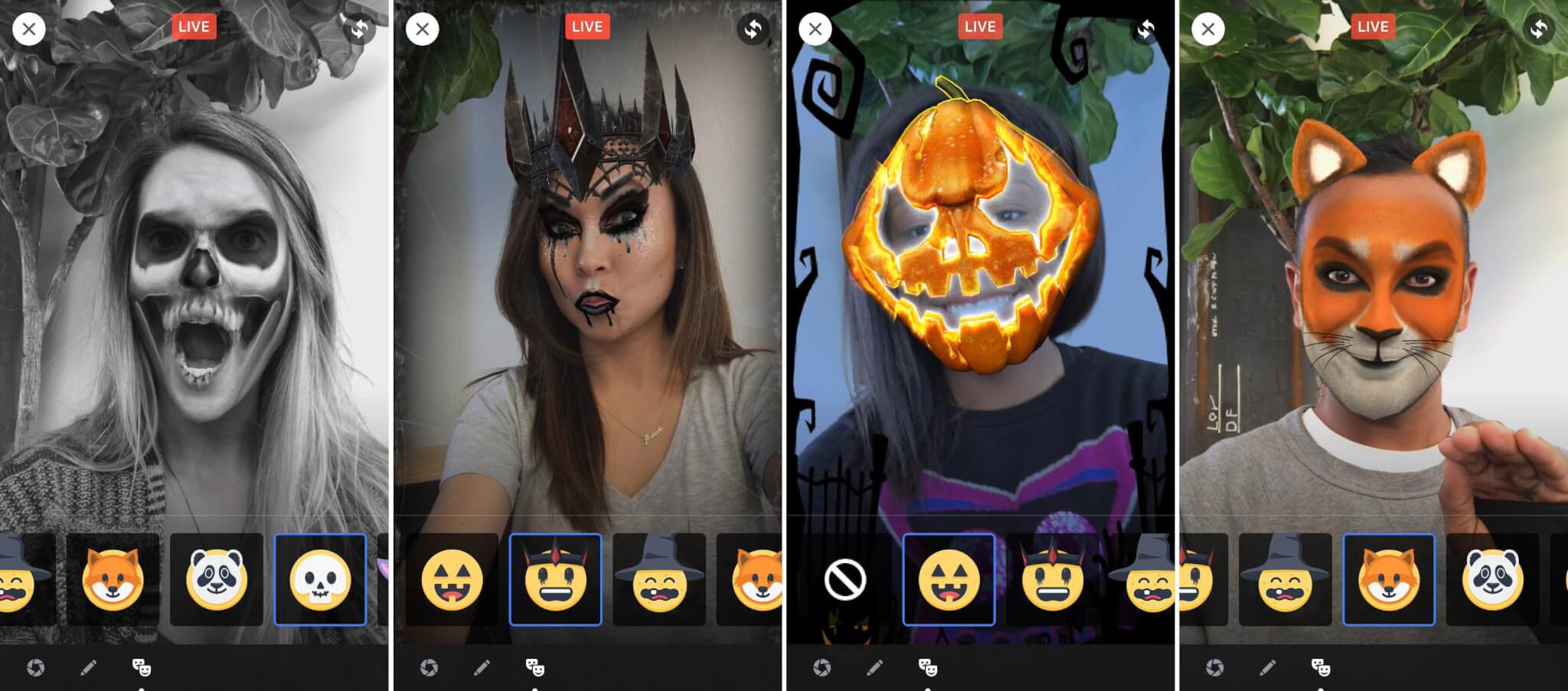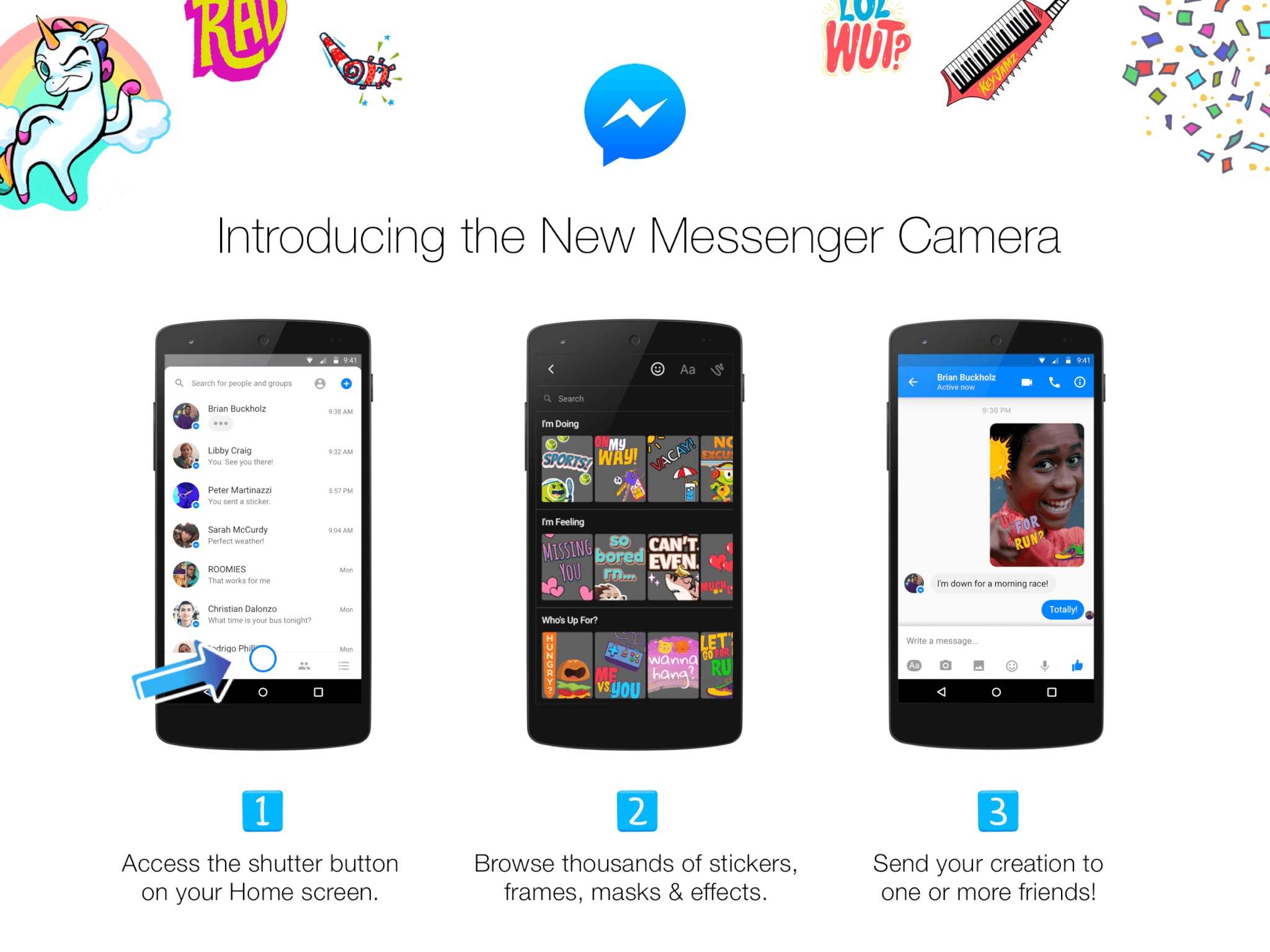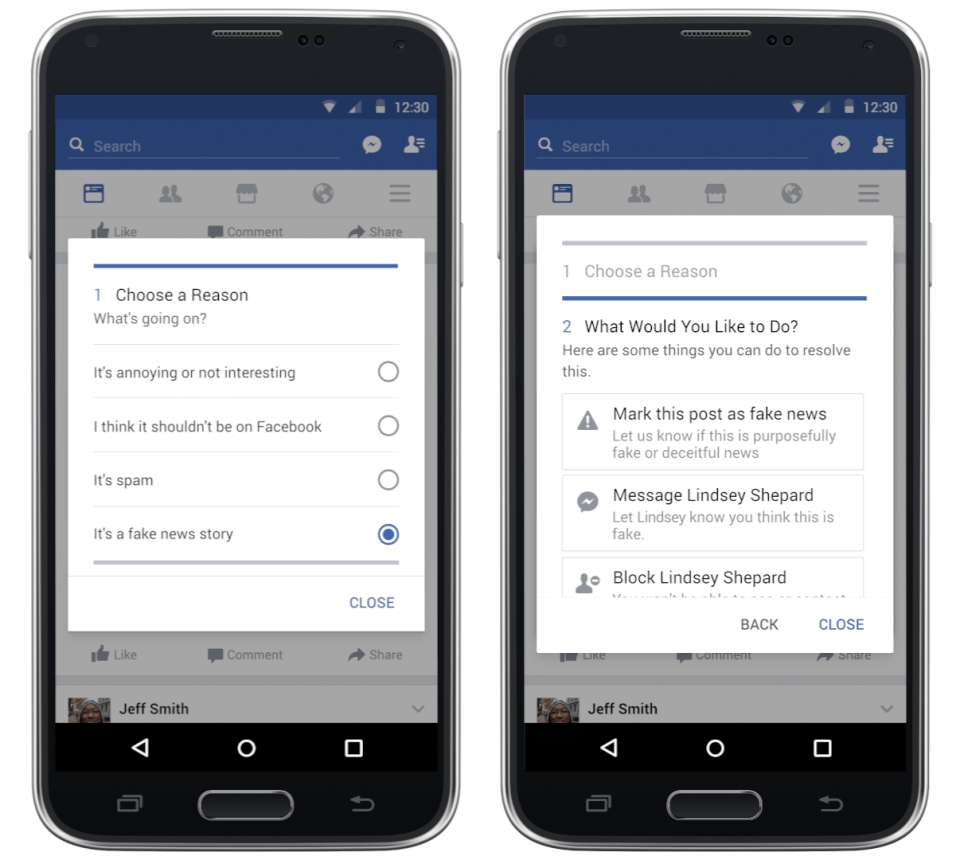Facebook didn’t flood 2016 with mind-blowing announcements, let’s be honest. In 2015, the company inched closer to making our world a much smaller place, thanks to the promotion of Free Basics, Oculus virtual reality, and more. But this year Facebook charted a different course, one that enabled its 1.8 billion monthly active users to be more vocal about their lives.
And, well, it hasn’t exactly been smooth sailing.
Instead of giant leaps into extraordinary new categories, Facebook doubled down on existing products, such as Messenger and Instagram. The features Facebook added in 2016 may impress users across these apps, but the company copied a great deal from Snapchat. (Imitation is the sincerest form of flattery, right?)
Facebook also made an aggressive push into live video. Through partnerships, relentless advertising, and a constant stream of new features, Facebook is determined to convince us that livestreaming is great and everyone should do it. (How else will the company increase its original sharing stats?)
On the less-than-stellar side, 2016 was also the year Facebook’s powerhouse advertising program had to recalculate its metrics multiple times. As 2017 approaches, we have to wonder if the controversy over inaccurate reporting will impact brands’ decisions to spend money on the platform. Has Facebook become too big, too fast, and will we now see it begin to slow down?
The dawn of Messenger
For much of 2016, Facebook’s new releases centered not on the social network itself, but on secondary products: building up chatbots, replicating features from Snapchat, and promoting livestreaming. With more than 1 billion people using Facebook Messenger each month, the company moved forward with plans to transform it into a platform. At F8, Facebook introduced a formal way for businesses to interact with customers, with the addition of some artificial intelligence.
The Messenger Platform allows developers to build conversational bots, using its send and receive API. This means the likes of CNN, Salesforce, OwnersListen, Poncho, Expedia, Hipmunk, and Yahoo can build applications to improve customer service and establish more intimate relationships with their customers. Facebook’s entry into the space enjoined it with Slack, Kik, Line, WeChat, and Telegram, each of which had been exploring bots for some time. But having a company with a household name on the scene cast a spotlight on this trend.
Was it worth it? There are now more than 34,000 bots on the platform, but how many provide real value? Facebook’s vice president of messenger David Marcus admitted earlier this year that the space “got really overhyped really, really quickly,” but he stopped short of saying that chatbots are doomed. Marcus explained that Facebook wanted to lay the groundwork for what the company hopes will be a flourishing ecosystem. “It’s not easy, and it takes time,” he noted on stage at TechCrunch Disrupt in September.
Facebook continued to improve the Messenger platform by introducing new capabilities, such as making it possible for bots to accept payments. While there’s much said about the use of artificial intelligence, the truth is these applications within Messenger are a hybrid of both advanced machine learning and human-powered customer service.
But this was only the beginning of Facebook Messenger’s push this year, as its capabilities expanded to not only enable more people to make Voice over Internet Protocol (VoIP) calls — the app now powers more than 10 percent of all calls globally — but also group video calls. The company also recently added more creative tools designed to personalize conversations. Facebook reports that more than 300 million people are making voice and video calls through Messenger each month.
On the other hand, 2016 saw hardly any public updates to M, Facebook’s pseudo-competitor to Siri, Alexa, and Google Now. Available to a select number of users through Messenger, M launched last year to help users complete tasks, with features like suggested responses, which Facebook is still experimenting with. While Facebook Messenger focused on bots and the platform launch this year, it’s possible that once the right number of partners jump on board, M could become a big part of Messenger in 2017.
Sharing is now in real time
People have been livestreaming for years, thanks to Ustream, Livestream, Justin.tv, and Twitch, but in 2016 Facebook and Twitter brought livestreaming into the age of mobile. Today, individuals, celebrities, and brands have a more consumer-friendly and commercialized option for sharing what they’re doing in real time.
For Facebook, encouraging people to go live has become a a key strategy. In some cities, subway stations and bus shelters are plastered with advertisements promoting Facebook Live, and commercials have aired in select markets. Whether you’re at a sporting event, political rally, graduation, or anything else you want to share in real time, the social networking company wants to make sure you can do so in an unfiltered way.
One of Facebook’s plans to attract new users is to bring in publishers and content creators — the YouTube stars, as it were. Facebook has signed agreements with 140 media companies and celebrities through which it will pay for content to be created. “The arrangements are a way to encourage publishers to produce a steady stream of high-quality videos, until Facebook figures out a more concrete plan to compensate creators, such as through sharing of ad revenue,” the Wall Street Journal reported.
Facebook’s payouts vary by contract and haven’t been officially disclosed, but reports say at least 17 publishers are receiving more than $1 million to go live. These include BuzzFeed ($3.05 million), the New York Times ($3.03 million), and CNN ($2.5 million).
And what about Facebook’s competition? Those companies aren’t giving up without a fight. YouTube jumped on the bandwagon this year with the launch of a livestreaming service in its mobile app. And Twitter has certainly not surrendered its position in the space — its Periscope service has broadcast more than 200 million streams in the past year. Twitter is also in pursuit of influencers, with a VIP program and support for including high-quality streams from your Xbox One, virtual reality headsets, computer or web cam, external cameras, and more.
Facebook, on the other hand, is rapidly beefing up its infrastructure to support broadcasts of up to four hours. And it’s introducing new tools, such as moderation, audio, and video controls that allow social media managers to manage live videos, scheduling, 360-degree videos, and more interactive livestreams. You can now “drop in” on conversations, and there are tools to help social media teams work more closely together. This month, Facebook also added live audio-only streaming.
Unlike Messenger, Facebook Live isn’t an application you download — it permeates throughout all of the social network’s properties so you can easily livestream within a status update, on the Facebook Mentions app, and through Instagram.
Facebook has seen at least a couple of instances that showcased the impact of live video this year. Viewers watched when Democrats from the U.S. House of Representatives used Facebook Live to broadcast their protest of the opposition’s refusal to vote on gun control legislation and when a person scaled Trump Tower in New York City. However, there were other examples that raised concerns about whether Facebook needs tools to preempt graphic content.

Above: U.S. House Democrats begin their sit-in protest of no gun control measures being voted on in the chamber.
In June, Diamond “Lavish” Reynolds broadcast live from her car while being detained by police. An officer had allegedly shot her boyfriend, Philando Castile, and as she broadcast in the moments following, viewers saw him slumped over and bleeding from his stomach. The video was quickly picked up and a day later had garnered 2.7 million views — but it appears to have been deleted now. It was also unavailable for a short time following the incident, leading to allegations that its brief disappearance was the result of police and Facebook interference. It was restored with a “viewer discretion” warning label, however, and the company attributed its absence to a “technical glitch.”
Still, some questioned why such graphic content hadn’t featured a warning upfront. The company issued a statement explaining how it separates “permissible graphic content” from violent images and banned videos:
The rules for live video are the same for all the rest of our content. A reviewer can interrupt a live stream if there is a violation of our Community Standards. Anyone can report content to us if they think it goes against our standards, and it only takes one report for something to be reviewed.
One of the most sensitive situations involves people sharing violent or graphic images of events taking place in the real world. In those situations, context and degree are everything. For instance, if a person witnessed a shooting, and used Facebook Live to raise awareness or find the shooter, we would allow it. However, if someone shared the same video to mock the victim or celebrate the shooting, we would remove the video.
Others have used Facebook to share equally disturbing things, such as livestreaming their suicide. And people have shown live action in war-torn places such as Mosul, shootings at a Munich shopping center, and more. But Facebook isn’t alone in struggling with the bigger implications of live video, as Twitter has faced criticism for also allowing people to livestream their own suicide or footage of someone being raped.
As the Columbia Journalism Review puts it: “Livestreaming isn’t going anywhere. The technology will continue to host photos and video from family get-togethers, school performances, and sporting achievements, bringing pleasure to millions. But it is how the platforms respond to the challenges posed by serious events that will test how seriously they take their role within the news ecosystem.”
Impact of Snapchat
Facebook once made an offer to buy Snapchat for $3 billion. The company wanted to dominate all things social and basically gave Snapchat an ultimatum: Sell to us or we’ll crush you. After Snapchat refused to sell, Facebook pushed forward with a series of experiments to figure out the ephemeral network’s secret sauce. After multiple failed attempts, Facebook began weaving Snapchat-inspired features into different products, including Messenger and Instagram.
Some see what Facebook has done with Instagram Stories, geofilters, and stickers in photos and videos as a sign that the social networking company isn’t original anymore. Instagram cofounder and chief executive Kevin Systrom recently heaped praise on the competitor, telling TechCrunch that Snapchat parent company Snap deserved all the credit for pioneering the space of ephemeral messaging and communication.
While pundits and analysts may wish for more innovation, you could argue that the features Facebook copied from Snap are not exclusive and were useful additions. Just because one company does something doesn’t prevent others from doing it too, right?
What can you believe anymore?
But 2016 was more than just product updates and copying. It was also the year Facebook became embroiled in one of its biggest controversies since its advertising technology Beacon was revealed to be collecting non-user data. In the aftermath of a divisive U.S. presidential election, Facebook has faced a barrage of criticism for allowing fake news stories to proliferate on the social network, allegedly contributing to Donald Trump’s victory.
Fake news is not a new problem, but after a hotly contested race, Facebook bore the brunt of the criticism for the phenomenon. At first, company chief executive Mark Zuckerberg downplayed its significance, saying in a post:
Of all the content on Facebook, more than 99% of what people see is authentic. Only a very small amount is fake news and hoaxes. The hoaxes that do exist are not limited to one partisan view, or even to politics. Overall, this makes it extremely unlikely hoaxes changed the outcome of this election in one direction or the other.
Nearly a week later, Zuckerberg clarified his statement: “While the percentage of misinformation is relatively small, we have much more work ahead on our roadmap.” He highlighted efforts Facebook would be making to reduce fake news on the site, including stronger detection technology, easier reporting features, third-party verification, warnings, quality improvements to the related articles feature, “disrupting fake news economics,” and listening to user concerns. Facebook has already put some of these efforts in motion, including partnering with Snopes and other signatories of Poynter’s International Fact Checking Code of Principles to help fact-check articles. But Facebook’s fake news initiative promptly received criticism from those who say it would allow the social network to censor certain sites.
Concerns about bias go back to earlier this year, when Facebook fired all of the human editors who worked on its trending topics feature after reports surfaced that conservative outlets were being censored. Facebook has has refuted these claims, and Zuckerberg wound up meeting with a few publishers to sort through the issue. Enhancements were made to improve the trending algorithm in an attempt to eliminate bias, but then Facebook found itself flat-footed when the iconic Vietnam War image of the “Napalm Girl” was censored.
And let’s not forget the temporary censorship of Shaun King after the Black Lives Matter activist and writer posted racist emails he received — Facebook issued a mea culpa, saying that it was a mistake.
In October, Facebook established a new official policy that no longer places as great an emphasis on censorship of the site. “Observing global standards for our community is complex. Whether an image is newsworthy or historically significant is highly subjective,” wrote Facebook’s vice president for global public policy Joel Kaplan and vice president of global operations and media partnerships Justin Osofsky. “Images of nudity or violence that are acceptable in one part of the world may be offensive — or even illegal — in another. Respecting local norms and upholding global practices often come into conflict. And people often disagree about what standards should be in place to ensure a community that is both safe and open to expression.”
Moving forward, the service promised to show images and stories that are deemed “newsworthy, significant, or important to the public interest — even if they might otherwise violate [Facebook’s] standards.”
Keep in mind that all of this took place while Facebook repeatedly denied that it was a media company, something it has only recently come to terms with. In a Facebook Live video, Zuckerberg acknowledged this reality, but with a caveat: “It’s not a traditional media company. You know, we build technology and we feel responsible for how it’s used. We don’t write the news that people read on the platform. But at the same time we also know that we do a lot more than just distribute news, and we’re an important part of the public discourse.”
Advertising hiccups
For many quarters, Facebook has been an advertising powerhouse, beating all analyst expectations in terms of revenue, marketing potential, and even user numbers. But the company began showing cracks in its facade this year when it had to recalculate advertising metrics not once, but an estimated 10 times.
Marketing Land has chronicled many, if not all, of the known measurement errors in the past year. In 2016, Facebook apologized for incorrectly tabulating the average watch time of Facebook page videos, the organic reach of page posts, the rate at which video ads are completely watched, the average time spent on Instant Articles, and more.
Facebook isn’t the only social network to experience at least one snafu in calculating advertising metrics, as Twitter has also apologized for a similar glitch. But for a company with more than $6 billion in advertising revenue, repeated missteps could cause some brands to move their advertising dollars elsewhere. On the other hand, the reach and the tools Facebook offers across not only its core social network but also Instagram could outweigh these bumps in the road.
That doesn’t mean the company should just brush these errors off. It’s said that more than two-thirds of social media ad spending was done through Facebook in 2016, meaning that the company has quite a bit to lose unless it figures out how to restore confidence in its metrics.
This year has passed with hardly any truly exciting product advancements from Facebook. The company has progressed naturally, but it has stumbled quite a few times along the way — enough to reveal some chinks in its armor, perhaps giving competitors an opportunity to pick away at its market share and dominance. Financially, Facebook continues to show it’s still able to grow, with its third-quarter numbers for monthly active users up 16 percent annually and revenue in that same time period up nearly 56 percent year over year. Facebook’s stock price has grown about 10 percent this year.
Facebook’s challenges in 2016 have revolved around three things: live video, advertising vulnerabilities, and its content problems. More than a decade on, Facebook has grown tremendously in size, stature, and capabilities, but is it becoming more complicated than it can handle?
For many quarters, the company has seen success both financially and in terms of growth, but that could all change if Facebook continues to allow fake news, incorrect metrics, and mediocre product releases to occur. It will be worth watching in 2017 to see if the ubiquitous social platform still has some magic up its sleeve.
VentureBeat's mission is to be a digital town square for technical decision-makers to gain knowledge about transformative enterprise technology and transact. Learn More
